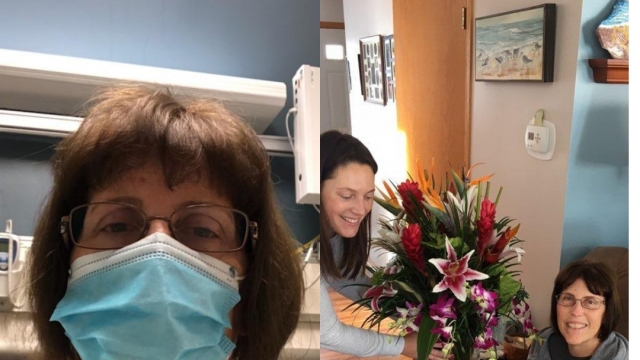Dr. Ankit Bharat has seen countless patients’ lung scans over the past year and half during the pandemic.
"This was probably one of the worst crises in living history," he tells Newsy.
He tenses talking about bed space and how surges hurt more than just COVID-19 patients.
"We didn't have enough beds and we were really struggling with caring for the COVID-19 patients and balancing our resources with patients who needed other treatments, like cancer," he said.
One analysis found more than 100 hospitals across the country paused surgeries as hospitalized COVID-19 patients surged last winter.
Out of necessity, came innovation from surgeons at Northwestern Medicine Central DuPage Hospital in Chicago. Now, someone can come in, find out they need a tumor removed, get surgery, and return home the same day to recover.
We weren't allowed in the operating room, but Northwestern shot this footage for us. Robotic techniques have made it possible to biopsy, mark a tumor, and recover quickly. To date, 30 lung tumor patients and 8 brain tumor patients have had it done.
"The ideal same (day) surgery candidates are patients who have tumors that are very superficial. So not the deep seeded brain tumors," Dr. Osaama Kahn, Neurosurgeon, Northwestern Medicine Central DuPage Hospital said.
It’s the same for lung tumors. The cancer must be stage one or two.
"Some of the safety things that we do is an involvement with anesthesia about the type of anesthetic that's going to be used to make sure that the patient is not still under some type of side effects of anesthesia prior to going home,' Dr. Kahn said.
But what do patients think? We spoke with Santiago Ramos, who had brain surgery, and Kim Thacker, who had lung surgery, and were home hours later.
"I was all for it. I wanted it gone immediately," said Ramos.
"I was shocked that part. I was like, I'm thinking I'm going to go home? And but, I did! Everything went really well and I did go home the same day," said Thacker.
"Previously they'll see a doctor or a surgeon, then they'll get a diagnostic procedure. The number of tests that are associated with the diagnostic procedure, then we have to wait for the results of that diagnostic procedure. Then someone has to call them again, have another visit with the surgeon to discuss surgery," Bharat said.
Those many steps mean more expenses for patients, and especially during the time of COVID-19 more chances of community exposure by coming to the hospital so much. And for cancer patients, it means more time for the cancer to grow.
"I'm the kind of person where if there's something wrong with me, I like to get it done as quick as possible," Ramos said, when asked if he worried he was being sent home too early.
"I don't think I thought about that too much. It was more the confidence in my surgeon. And once you hear you have cancer, you want it out. I mean, you just don't play around," Thacker said.
Both had to hit certain benchmarks to be released from the hospital the same day, but really that was it. Healing on their own, with their family as support. They’ve had the usual follow-ups since.
Bharat estimates some 1200 patient beds a year are freed up from going from the 2-4 days to same day surgery. Ultimately, if a patient qualifies, it's still up to them. If someone prefers to take their time, they can.
"It's not a mandatory thing. We really look at what patients are feeling, and we work with them closely to make sure they are well supported psychologically and so forth. And sometimes they need more time," he said.
This story originally reported by Lindsey Theis on Newsy.com


